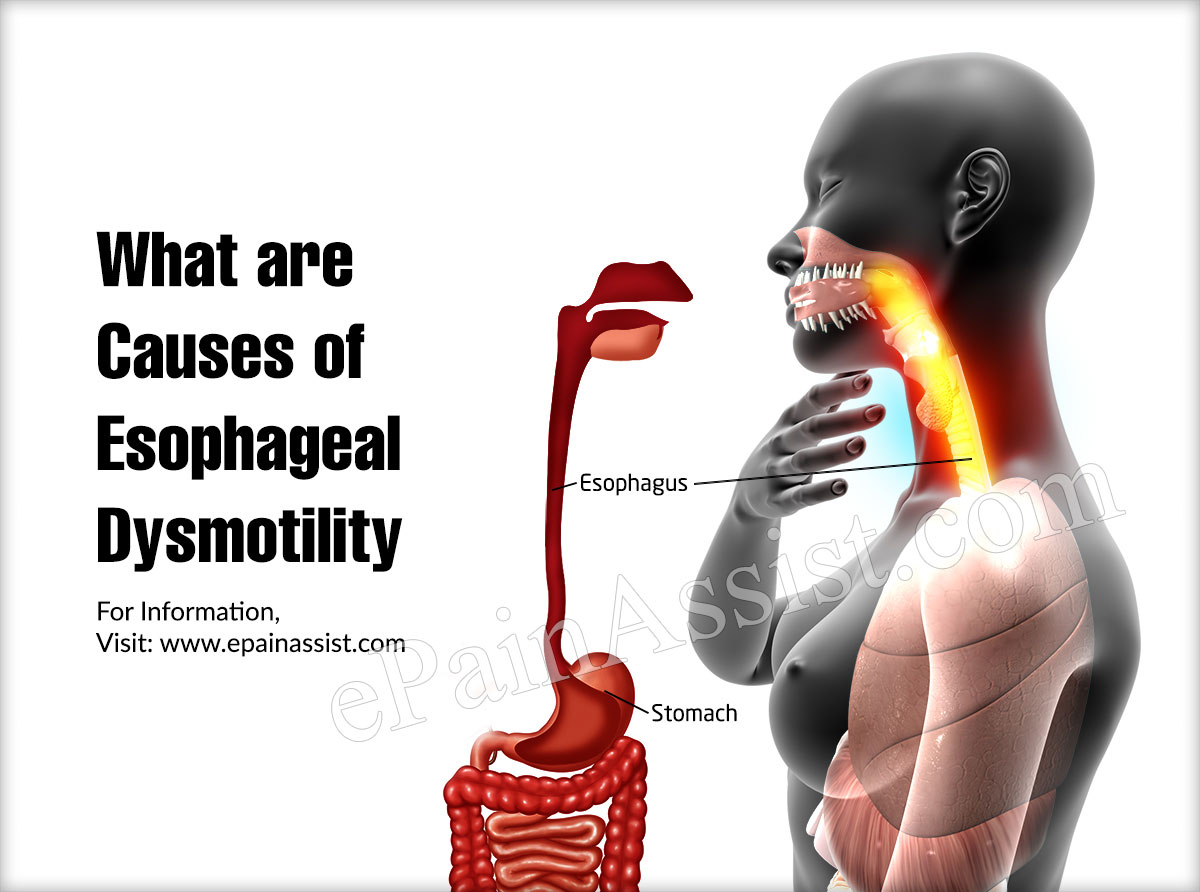What is Esophageal Dysmotility?
In a normal process of eating, our tongue pushes the liquids and foods from our mouth down to our throat. From there, the liquids and foods that we have consumed travel into the esophagus from the throat, then move along to the stomach. In order to keep this process of liquids and foods moving on to our stomach, the muscles of esophagus contract and relax in wave-like movement.
When a person suffers from esophageal dysmotility, there is difficulty in passing of the liquids and foods down the esophagus and this results in problems with swallowing.(3)

What are the Causes of Esophageal Dysmotility (4)?
The causes of Esophageal Dysmotility include:
- Abnormal or uncoordinated muscles in the throat, mouth or esophagus.
- Presence of a stricture, ulcer, infection, irritation, inflammation or esophageal cancer.
- Having a stroke or any other brain/nerve issues, which leads to weakening of the muscles of the tongue, mouth or throat and un-coordination in the muscles.
What are the Risk Factors for Esophageal Dysmotility ?(2, 3)
People having malignant or benign strictures are at high risk for esophageal Dysmotility.
People suffering from esophageal motor disorders such as:
- Achalasia (where there is zero relaxation of lower esophageal sphincter).
- Esophageal Spasm (uncoordination of esophageal contractions) are at risk for esophageal dysmotility.
- Having multiple sclerosis increases the risk for esophageal Dysmotility.
- Having neurological or neuromuscular disorders, such as: myasthenia gravis, muscular dystrophy, myopathy, peripheral neuropathy and myositis (dermatomyositis and polymyositis); amyotrophic lateral sclerosis (ALS) and charcot-marie-tooth disease; all these conditions increase the risk for esophageal dysmotility.
What are the Symptoms of Esophageal Dysmotility?
The symptoms of esophageal dysmotility consist of: Regurgitation,(3) heartburn,(3) difficulty swallowing,(3) chest pain,(3) feeling as if the food is stuck in the throat or chest; recurrent bouts of pneumonia; malnutrition and weight loss.
How is the Diagnosis of Esophageal Dysmotility Made?
If esophageal Dysmotility is suspected, then the doctor will first start with physical examination and patent’s medical health history.
Tests and imaging techniques done for diagnosing esophageal dysmotility consist of:
- Endoscopy: This test helps in visualizing the inner walls of the esophagus to assess the dysmotility. Endoscopy also helps in ruling out a tumor.(5)
- Barium Swallow Study: This test also helps with the assessment of esophageal Dysmotility.(5)
- Esophageal Manometry (1): This is a procedure, which helps in evaluating the function of the esophageal muscle.(5)
- Endoscopic Ultrasound (EUS): This procedure is a combination of endoscopy and ultrasound; and generates images and information regarding the digestive tract and its surrounding tissues and organs.
- pH Study: This study helps in evaluating the abnormal reflux.
What is the Treatment for Esophageal Dysmotility?
Depending on the underlying cause, treatment for esophageal dysmotility includes:
- Medications for decreasing the spasms in the muscles of the digestive system.
- Botulinum toxin (Botox) injections into the region of the dysmotility.(5, 6)
- Heller myotomy is a laparoscopic surgical procedure that is minimally invasive and can be done to treat esophageal dysmotility.(6)
- Balloon dilation can be done of the lower esophagus to cause disruption of the dysmotility.
Conclusion: What Should One Do When Suffering From Esophageal Dysmotility?
Patients suffering from esophageal dysmotility should try to be proactive as much as possible. When experiencing the symptoms of esophageal dysmotility, then patient should always consult their physician to discuss about the various options for treating esophageal dysmotility. In this way, esophageal dysmotility can be treated or managed and the patient can live a healthy and normal life as much as possible.
